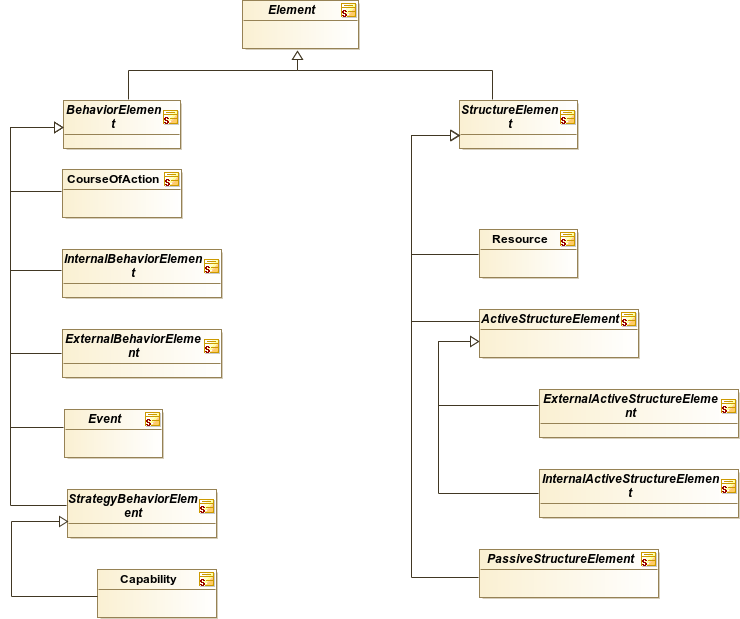
ArchiMate Metamodel
It consists of two main types of elements: structure ('nouns') and behavior elements ('verbs').
Structure elements
Structure elements are the strategic element resource, and structural elements, which can be subdivided into active structure elements and passive structure elements. Active structure elements can be further subdivided into external active structure elements (also called interfaces) and internal active structure elements.
Behavior Elements
Behavior elements represent the dynamic aspects of the enterprise. Similar to active structure elements, behavior elements can be subdivided into internal behavior elements and external behavior elements; i.e., the services that are exposed to the environment.
These three aspects - active structure, behavior, and passive structure - have been inspired by natural language, where a sentence has a subject (active structure), a verb (behavior), and an object (passive structure).


Package | Summary |
|---|---|
Composite elements consist of other concepts, possibly from multiple aspects or layers of the language. | |
Introduces the generic motivation element. |
Class | Summary |
|---|---|
Active structure elements are the subjects that can perform behavior. | |
Behavior elements represent the dynamic aspects of the enterprise. | |
An event is a behavior element that denotes a state change that influences behavior. | |
An external active structure element, called an interface, represents a point of access where one or more services are provided to the environment. | |
An external behavior element, called a service, represents a unit of valuable functionality with a specific outcome that a system exposes to its environment while hiding internal operations. | |
An internal active structure element represents an entity that is capable of performing behavior. | |
An internal behavior element represents a unit of activity performed by one or more active structure elements. | |
Passive structure elements are the objects that can be accessed by behavior elements. | |
Represents structure elements. |